


November 24, 2022
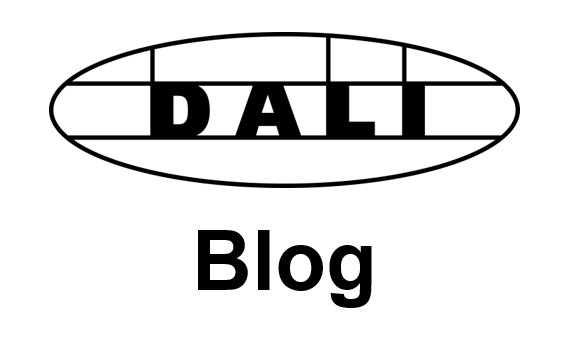 The Lighting Controls Association (LCA) recently conducted an interview with Paul Drosihn, General Manager of the DALI Alliance, to discuss D4i and related topics.
The Lighting Controls Association (LCA) recently conducted an interview with Paul Drosihn, General Manager of the DALI Alliance, to discuss D4i and related topics.
>> LCA article: D4i standardizes luminaire-level control
>> Press release: LCA and DALI Alliance announce MOU
Q1. What is the D4i standard and how does it build on previous DALI advantages and limitations to offer new capabilities?
D4i enables a standardized approach to luminaire-level lighting control (LLLC) by simplifying the addition of communication devices and sensors to luminaires. D4i uses the robust, well-established DALI protocol for digital communication between lighting-control devices within the luminaire. All key features of DALI, such as the standardized dimming curve, are also available in D4i.
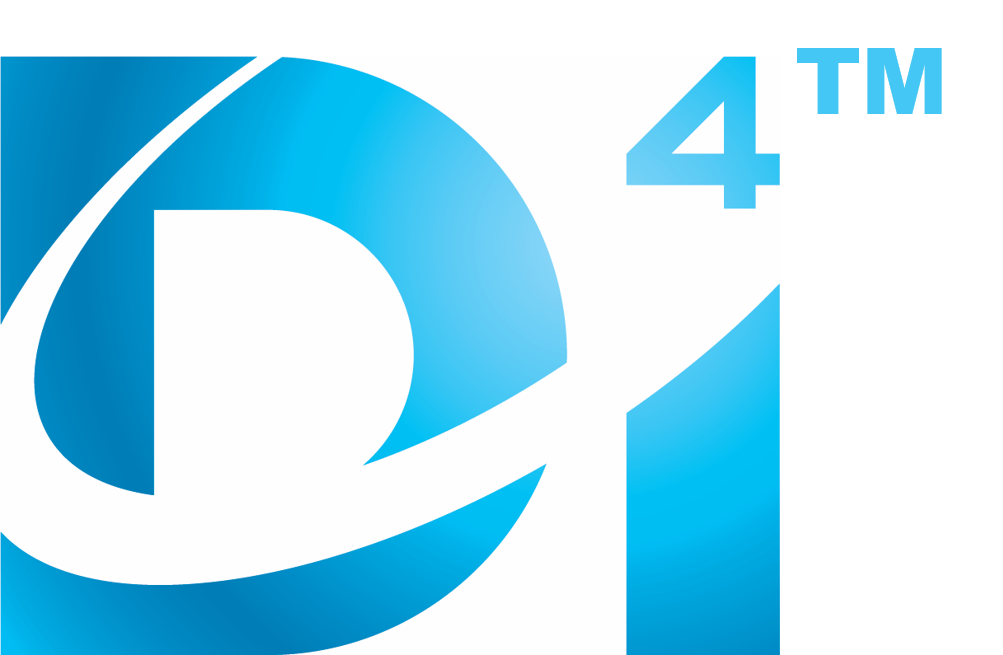 Technically, D4i is an extension of DALI-2 certification, built on global standards and focused on interoperability between devices from different manufacturers. D4i includes mandatory features such as the availability of a rich set of data for energy usage reporting, diagnostics and maintenance, and luminaire information. Crucially, D4i also specifies power requirements that enable plug-and-play connectivity of luminaires, network lighting controllers (NLCs) and sensors, especially when used in conjunction with a connector system such as Zhaga or ANSI C136.41.
Technically, D4i is an extension of DALI-2 certification, built on global standards and focused on interoperability between devices from different manufacturers. D4i includes mandatory features such as the availability of a rich set of data for energy usage reporting, diagnostics and maintenance, and luminaire information. Crucially, D4i also specifies power requirements that enable plug-and-play connectivity of luminaires, network lighting controllers (NLCs) and sensors, especially when used in conjunction with a connector system such as Zhaga or ANSI C136.41.
Q2. What problems does it solve in the industry?
By taking care of the power requirements for luminaire mounted NLCs and sensors, D4i reduces the component count and simplifies wiring requirements inside the luminaire. Data stored in the memory banks of the D4i driver solves many issues, such as being able to monitor real-time energy and power usage which can be used to qualify for utility rebates.
Q3. For designers, contractors, and users, what are the advantages of D4i-certified lighting and control solutions?
Certification simplifies the design and specification process, ensuring that the power and data features that are mandatory in D4i will be available in all certified products, irrespective of the manufacturer. As well as high confidence in the interoperability of certified products, the user is also assured that compatible devices will be available in the future.
Q4. How does this compare to other wireless solutions and protocols?
D4i itself is not itself a wireless protocol, but it can enable wireless connectivity between luminaires via the use of gateways i.e. NLCs that translate between DALI (used inside the luminaire) and a wireless protocol (connecting to an external network). The DALI Alliance will shortly introduce DALI-2 certification for standardized wireless to DALI gateways, which could allow the wireless ecosystem (either Bluetooth mesh or Zigbee) to control a D4i luminaire or a network of wired DALI luminaires and other devices.
An important distinguishing feature of the DALI protocol, which underpins D4i and DALI-2, is that it is based on open, global standards which were created and expanded specifically to meet the needs of the lighting market.
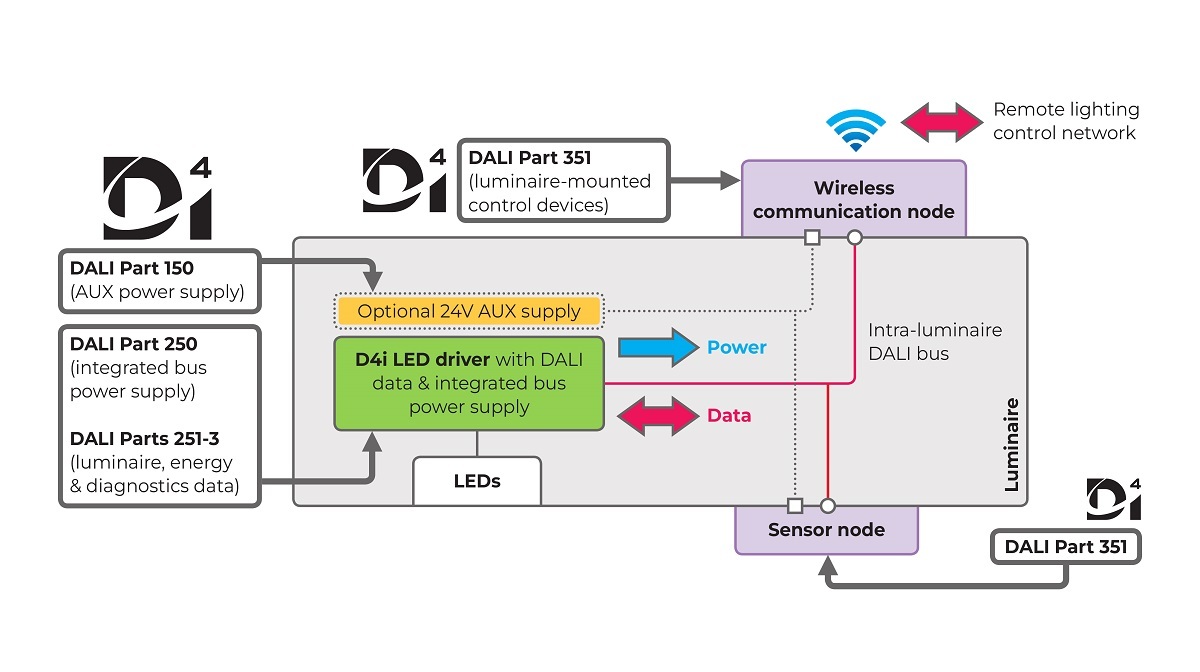
| Diagram depicting D4i implementation in an outdoor luminaire with two nodes, one for sensing and the other for wireless communication. |
Q5. What applications is D4i ideally suited for?
As stated above, D4i was designed to enable LLLC, and is already well established in outdoor applications and industrial lighting, where the data is particularly valuable. For example, during the manufacturing process, luminaire information can be programmed into the driver. When the luminaire is installed and connected to a network via a D4i-enabled NLC, the luminaire data can be extracted and used for automated commissioning and asset management, by a utility or building owner for example.
Indoor applications for D4i are emerging rapidly, and we expect this to be accelerated by the enormous potential ($12.5 million) prize fund offered by the DOE L-Prize competition. The Prototype Phase of this competition requires the use of standards-based connectivity systems based on D4i or ANSI C137.4, which is harmonized with D4i.
Q6. D4i offers a path for extracting data for IoT applications. How does it do this, what kinds of data are available, and what are typical IoT applications?
IoT applications require addressability of individual devices, connectivity, and two-way exchange of data, all of which are features inherent in DALI. D4i requires a mandatory set of data that enables the D4i driver to store luminaire information (for example the color temperature or optical distribution, which can be used for asset management at the network level). The driver can also provide real-time energy usage data, and diagnostics information that could be used for preventative maintenance.
Q7. What do designers, specifiers, and contractors need to know to effectively implement D4i-based lighting control solutions? What’s different, where education would help them be more adoptive?
The first barrier is general awareness of the benefits and capabilities of D4i luminaires. D4i certification and logo usage is intended to help users to recognize compatible devices, and understand that D4i products from different manufacturers can be specified with a high degree of confidence in their interoperability.
Even so, care is required to select D4i devices with the correct performance attributes, and further information can be found in our product database, which lists all certified D4i and DALI-2 devices. Users should also be aware that a standards-based ecosystem of products is likely to avoid the problem of vendor lock-in with proprietary technologies that may not be supported in the long term.
Q8. The DiiA certifies products that comply with the standard. How many manufacturers/products are listed, and what opportunities are there for mixing and matching to achieve the best solution?
Many of our member companies have certified their D4i drivers and control devices, and these are all listed in our online product database. Certification has a strong focus on interoperability meaning that products from different manufacturers can be used with one another on a mix and match basis.
Q9. The DiiA has partnered with Zhaga. What does compliance with both standards mean in terms of capabilities and benefits?
The Zhaga specifications define the mechanical requirements for connector systems that are used in either indoor or outdoor applications. Zhaga relies on D4i to provide the luminaire-level communication between devices, and to take care of the power requirements for luminaire-mounted nodes (such as NLCs and sensors). Certification by both the DALI Alliance and Zhaga enables plug-and-play connectivity of nodes and luminaires. In turn, this enables future-proof luminaires where the nodes can be readily updated to keep pace with evolving communication and sensor technologies.
Q10. If you could tell the entire electrical industry just one thing about D4i, what would it be?
D4i offers a simplified, standardized approach to luminaire-level lighting control, with a rich set of data.
► Sign up to join our mailing list and receive our newsletter
► Follow the DALI Alliance on LinkedIn or join the LinkedIn DALI Group